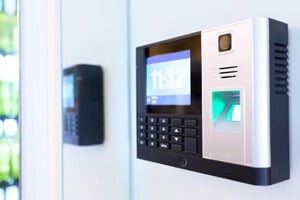Ma Bell Dives Into Home Automation With Digital Life Package
Home automation is the rare futuristic idea that has almost universal appeal. Yet, it’s been slower to arrive than other, more controversial technologies. But a few recent developments suggest that it's edging toward mainstream adoption. AT&T is currently rolling out Digital Life, a home automation subscription service that connects alarm systems, security cameras, lights, thermostats and selected devices (like the iron) to a mobile app.

Share
The surest way to persuade a luddite that the Internet of Things is a good thing is to explain that home lighting and appliances will connect to his or her smartphone, inviting more efficient use and making it possible, finally, to know if the iron or the stove was left on and even to turn it off remotely.
Home automation is the rare futuristic idea that has almost universal appeal. Yet, it’s been slower to arrive than other, more controversial technologies. But a few recent developments suggest that it's edging toward mainstream adoption. This fall, Amazon opened a home automation storefront. And AT&T and home security companies are increasingly offering connected appliances packages.
Home security leader ADT has expanded to offer automated locks and cameras in addition to its alarm service, and newer arrivals such as Utah-based Vivint offer a full slate of automated devices. Vivint has done well with its automation services, according to IDC analyst Jonathan Gaw.
And AT&T is in the process of rolling out Digital Life in small and medium cities across the United States. Ma Bell's stab at the Internet of Things connects alarm systems, security cameras, lights, thermostats and individual electrical outlets to a mobile app. Rollout began in April, and the service is currently available in almost 60 U.S. cities.
An advertisement targets not technophiles but average families with kids, making the Internet of Things seem as familiar as long-distance calling:
Be Part of the Future
Sign up to receive top stories about groundbreaking technologies and visionary thinkers from SingularityHub.


But for a price. The basic security service costs $40 a month plus a $150 setup fee. Energy, doors, cameras and water leak detection each cost a bit more per month with additional equipment fees ranging from $100 to $200. For instance, smart plugs that allow users to turn off everyday items, like that iron, go for $50. All told, then the service costs roughly $60 a month plus $700 in setup costs.
Of course, AT&T charges $80 a month with a $250 setup fee for U-Verse, its Internet television package, so Digital Life’s price point isn’t exactly a tax on early adopters.
One major challenge for AT&T is that its home automation service relies on smart devices it selects and sells (but does not manufacture). For instance, the company eschews the popular Nest, which doesn't integrate with other automated devices. AT&T offers a wirelessly controlled door lock for $250, while the Lockitron goes for $179 and works with any mobile phone.
Tech-savvy users who have particular products in mind may therefore chafe at AT&T’s restrictions.
It’s too soon to tell if home automation will lure customers from home security devotees, gadget aficionados, or simply digital TV and wireless customers looking to get more use from their Internet service. But whoever the early customers are, there’s a growing group of companies jockeying to get their business.
Cameron received degrees in Comparative Literature from Princeton and Cornell universities. He has worked at Mother Jones, SFGate and IDG News Service and been published in California Lawyer and SF Weekly. He lives, predictably, in SF.
Related Articles

This Light-Powered AI Chip Is 100x Faster Than a Top Nvidia GPU

How Scientists Are Growing Computers From Human Brain Cells—and Why They Want to Keep Doing It

These Brain Implants Are Smaller Than Cells and Can Be Injected Into Veins
What we’re reading


